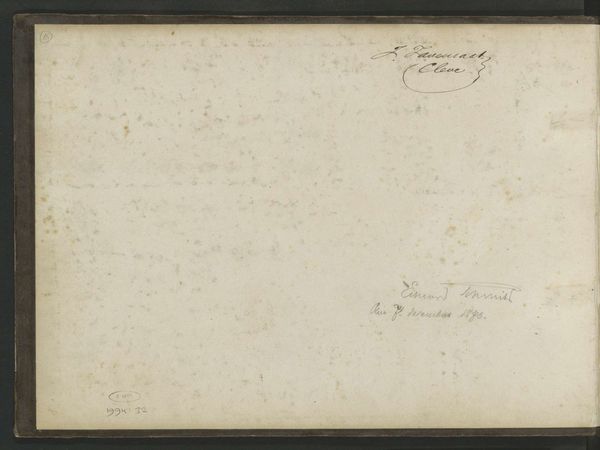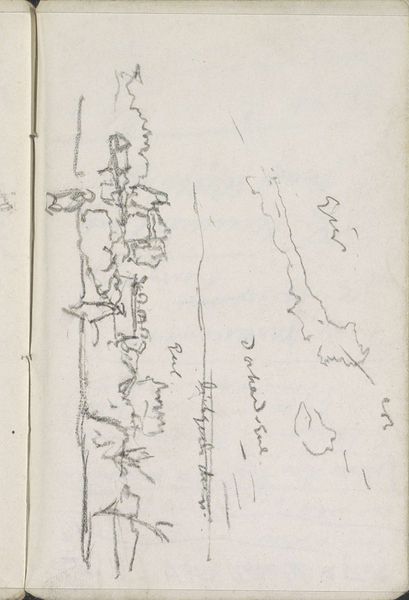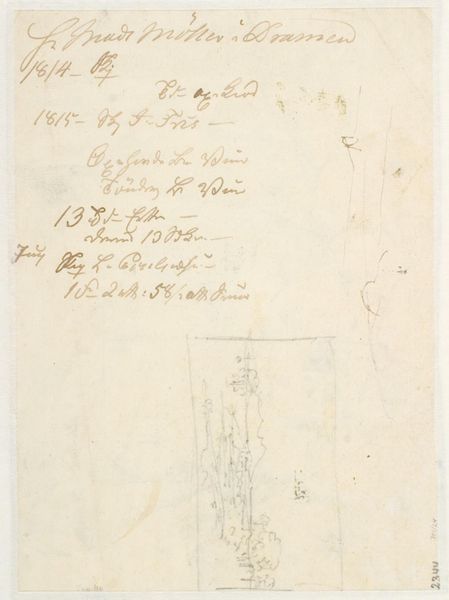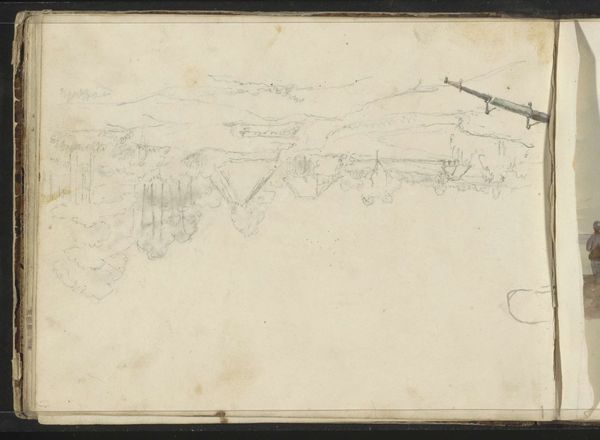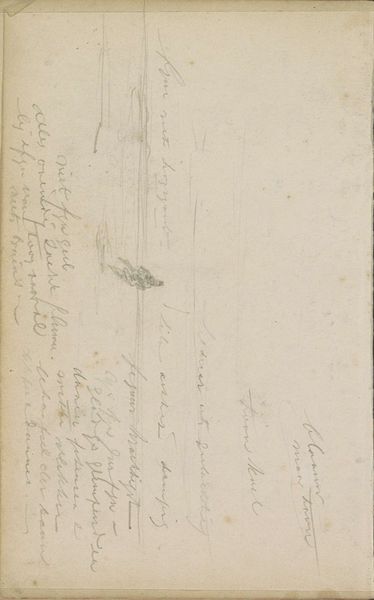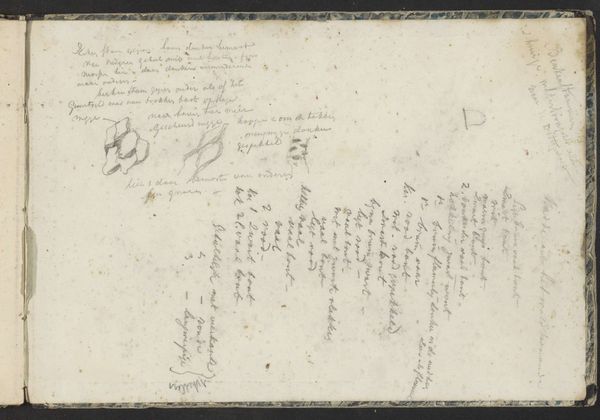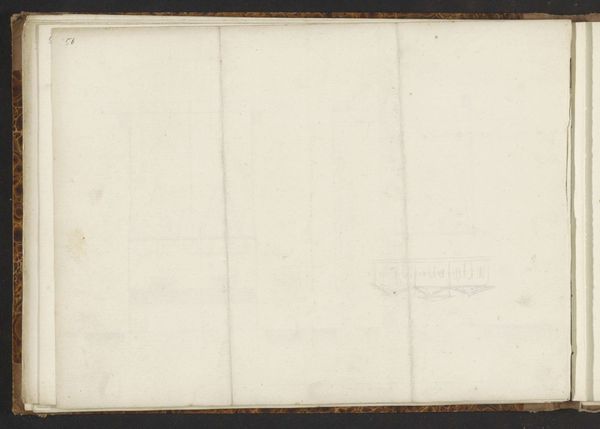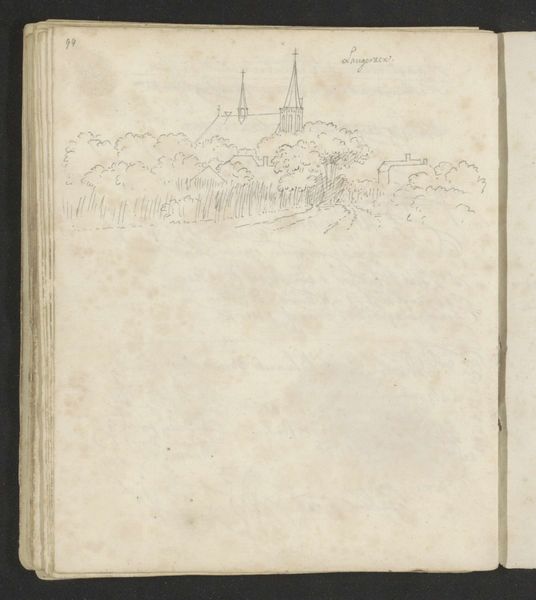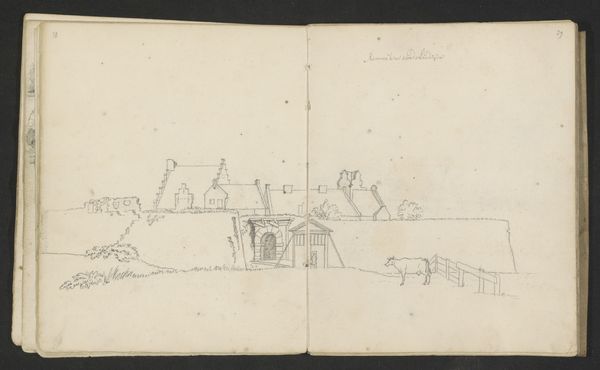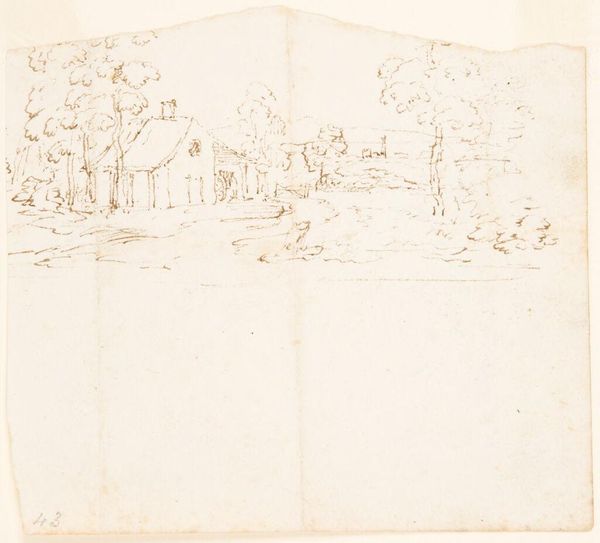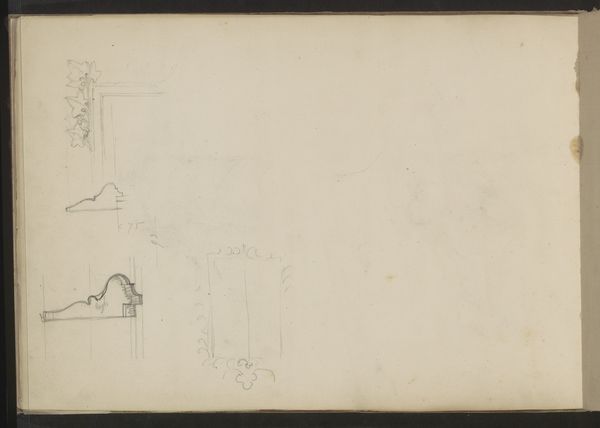
Tolhuis en zijgevel van de Munsterkerk te Emmerik Possibly 1731 - 1737
0:00
0:00
drawing, pen, architecture
#
drawing
#
aged paper
#
toned paper
#
dutch-golden-age
#
sketch book
#
hand drawn type
#
landscape
#
personal sketchbook
#
hand-drawn typeface
#
ink colored
#
pen work
#
sketchbook drawing
#
pen
#
sketchbook art
#
architecture
Copyright: Rijks Museum: Open Domain
Editor: This drawing, “Tolhuis en zijgevel van de Munsterkerk te Emmerik,” is attributed to Abraham de Haen the Younger, likely created between 1731 and 1737. It’s pen on paper, currently residing in the Rijksmuseum. I find it captivating, how such simple lines evoke a sense of place. What compositional elements stand out to you? Curator: Note how the horizon line divides the composition, with the upper register filled by the silhouetted townscape and the lower dominated by the bare page. The sketchy, almost frenetic, lines defining the Tolhuis contrast starkly with the more precise rendering of the Munsterkerk's side facade. Ask yourself, what is the relationship between these two distinct sections? Editor: That's a great point about the contrasting styles. The sketchiness feels almost hurried compared to the details in the church. Is there any significance in this variation of style, or could it simply be a matter of perspective or perhaps different levels of importance to the artist? Curator: Consider the function of line. Is it merely descriptive, or does it evoke something more? Look at the economy of line used to create the Tolhuis. Notice its efficiency in conveying form and texture. Now consider the deliberate strokes employed in the architectural depiction of the church. This interplay underscores a deliberate choice in representing spatial relationships. Editor: I see. It’s like the artist is playing with the very language of drawing to emphasize certain elements and deemphasize others. The texture and depth really become more apparent when focusing on that variation. Curator: Precisely. Reflect on the visual relationship between line, form, and composition, allowing us to grasp the artist’s intended relationship to his subjects. Editor: I learned a lot about seeing intention through composition and texture. It's far more involved than simple replication! Curator: And I see the drawing with fresh eyes thanks to your appreciation for Haen’s ability to breathe life into the scene.
Comments
No comments
Be the first to comment and join the conversation on the ultimate creative platform.
